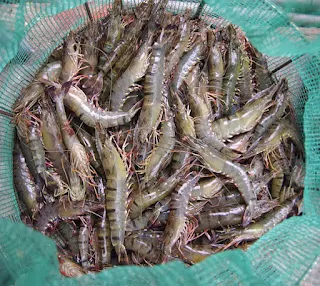Fish Farm Expanded Map Treasure: Unlocking the Potential of Aquaculture
Aquaculture has been a vital industry for centuries, providing reliable food sources for people around the world. Fish farming is one of the most common forms of aquaculture and is becoming increasingly popular as demand for seafood continues to rise.
With this growing demand, it is essential to explore new ways to expand fish farms and increase productivity. One innovative approach that has recently gained attention is the concept of creating an expanded map treasure for fish farms.
What is an Expanded Map Treasure?
An expanded map treasure is a blueprint for expanding the infrastructure of existing fish farms. It involves identifying areas of potential growth and implementing strategies to optimize production.
By utilizing advanced mapping technologies, such as Geographic Information Systems (GIS), farmers can identify areas with the most significant potential for expansion.
These maps can provide valuable insights into factors such as water temperature, current patterns, and available nutrients, enabling farmers to make informed decisions about where to expand their operations.
The expanded map treasure also outlines methods for optimizing the use of resources such as electricity, water, and feed, ensuring that fish farms are sustainable and cost-effective.
Why is an Expanded Map Treasure Important?
An expanded map treasure is critical to the long-term success of fish farming for several reasons.
- Firstly, it ensures that farms operate optimally by maximizing production while minimizing waste. This not only benefits the environment but also improves the profitability of farms by reducing costs.
- Secondly, an expanded map treasure helps identify potential risks and threats to fish farms. For example, if a farm is located in an area prone to storms or flooding, an expanded map treasure can help farmers take preventative measures to protect their stock. Similarly, by monitoring water quality and other environmental factors, farmers can respond quickly to any changes that may affect the health of their fish.
- Finally, an expanded map treasure promotes sustainable fish farming practices. By carefully considering the impact of farming activities on the surrounding environment, farmers can help protect local ecosystems and ensure that their operations are environmentally responsible.
How Does an Expanded Map Treasure Work?
Creating an expanded map treasure is a complex process that involves several steps. The first step is to gather data on the existing farm infrastructure, including tank locations, water sources, and feed systems.
Once this data has been collected, farmers can use GIS technology to create detailed maps of the farm and surrounding area.
These maps provide a wealth of information about the physical characteristics of the land, including soil type, topography, and vegetation cover.
This information can be used to identify areas with the most significant potential for expansion, such as flat, fertile land with access to clean water sources.
The next step is to analyze environmental factors that could impact the farm's productivity, such as water temperature, pH levels, and dissolved oxygen content.
This information can be used to optimize the farm's infrastructure, such as by installing heaters or cooling systems to maintain consistent water temperatures.
Once the expanded map treasure has been created, farmers can use it to develop a comprehensive management plan that outlines strategies for optimizing production while minimizing waste.
This may include adjusting feeding schedules, monitoring stock health, and implementing biosecurity measures to prevent disease outbreaks.
The Benefits of an Expanded Map Treasure
There are many benefits to creating an expanded map treasure for fish farms.
- Firstly, it enables farmers to increase their production capacity, allowing them to meet growing demand for seafood. This not only benefits consumers but also creates jobs and stimulates economic growth in rural areas.
- Secondly, an expanded map treasure promotes sustainable aquaculture practices by ensuring that farms are located in optimal locations and operate efficiently. This helps reduce the environmental impact of fish farming activities and protects local ecosystems.
- Finally, an expanded map treasure encourages innovation and investment in the aquaculture industry. By providing farmers with detailed information about potential expansion opportunities, it enables them to make informed decisions about their operations and invest in new technologies and infrastructure.
An expanded map treasure is a valuable tool for fish farmers looking to expand their operations and increase productivity.
By utilizing advanced mapping technologies and analyzing environmental factors, farmers can identify areas with the most significant potential for growth and implement strategies to optimize production.
Creating an expanded map treasure promotes sustainable aquaculture practices, protects local ecosystems, and stimulates economic growth in rural areas.
As demand for seafood continues to rise, it is essential that we explore new ways to expand fish farms and ensure a reliable source of food for future generations.
 Reviewed by Tanmoy Roy
on
June 01, 2023
Rating:
Reviewed by Tanmoy Roy
on
June 01, 2023
Rating:


Post a Comment